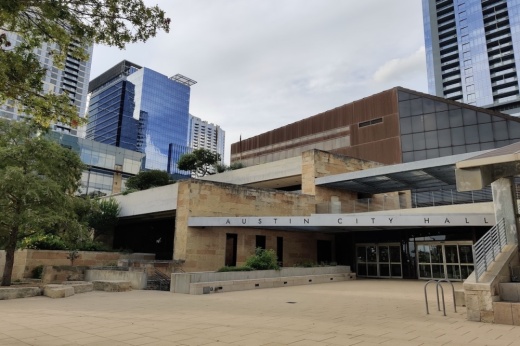The context
In Austin, city land-use rules require many kinds of development—homes, car shops, churches, stores, doctor's offices, colleges and more—to build a minimum number of parking spaces on-site. For cocktail lounges, a label applied to establishments with most of their revenue coming from alcohol sales, a certain amount of parking must be provided based on square footage.
Bars that are smaller than 2,500 square feet must build at least one parking spot per 100 square feet, meaning a 2,499-square-foot cocktail lounge needs about 20 parking spaces.
Parking requirements get stricter as bar size increases. Bars between 2,500 and 10,000 square feet have to include a parking spot for every 50 square feet of space; a 5,000-square-foot bar would need 100 spots. And any cocktail lounges larger than 10,000 square feet need to have a parking spot for every 25 square feet of floor space, meaning a 10,001-square-foot bar would need a parking lot with at least 400 spots.
The debate over reducing or removing parking requirements for different types of properties has continued in Austin for years, with varied perspectives on the policy's effects on development planning and costs, local mobility choices and safety on roads and sidewalks.
The overview
A proposal from District 3 Council Member José Velásquez seeks to eliminate all parking requirements for Austin cocktail lounges. A resolution that was considered and approved April 13 will now start a process to cut those requirements out of the city's land development code—with an exception for accessible parking rules.
In his proposal, Velásquez noted that a city-imposed parking floor is out of step with Austin's environmental and mobility plans aimed at reducing car use over time. He said limiting parking access is one strategy to both encourage different travel options and discourage driving under the influence.
"We are seeing an increasing number of citations and fatalities as a result of drunk driving. By eliminating the need for a bar to provide parking for their patrons, we can help reduce these numbers and encourage other modes of transportation that align with Austin's Strategic Mobility Plan," Velásquez said in a statement.
Velásquez also said current parking mandates can often go well beyond residents' or businesses' actual needs, while costing them tens of thousands of dollars in construction for each space.
After hearing about the issue in the community leading up to Velásquez's election last year, his office said the move to change local parking mandates has been greeted with a generally positive reception.
"District 3 has a high volume of bars, including parts of entertainment districts, and throughout my campaign trail and my first few months in office, I have had the opportunity to have conversations with many community members and bar owners in the district who voiced their concerns about pedestrian traffic, incentivizing drunk driving with current parking requirements and public safety," Velásquez said.
He also encouraged any residents with input on the process to provide feedback to the District 3 office. The resolution also passed with additional direction from District 6 Council Member Mackenzie Kelly that will see city staff engage with local bar owners as well as various bar and business associations before any civic rules are adjusted.
By the numbers
Local, state and federal data shows that drunk driving remains a leading cause of traffic deaths in Texas and the Austin area. Hundreds of people have been killed in Travis County since the early 2010s in alcohol-related incidents on the road, and thousands of Austinites are arrested every year for driving while intoxicated.
Per Texas Department of Transportation information, Travis County saw 28 DUI-related traffic deaths in 2011, half of which were victims 30 years old or younger. That total jumped to 48 deaths as of 2021, including 23 aged 30 or younger.The county medical examiner also reported that alcohol was detected in nearly one-third of local traffic fatalities in 2021.





